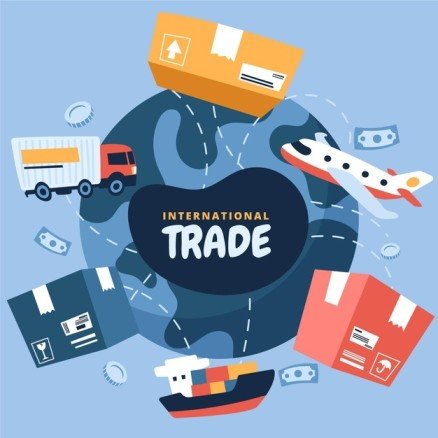
1. Introduction
When sourcing products from China or engaging with suppliers for manufacturing needs, payment terms stand as one of the most critical aspects of the entire process. Their significance isn’t merely transactional; they play a pivotal role in determining the health, trust, and dynamics of the business relationship. However, these aren’t just simple exchanges of goods or services for money. They encapsulate a broader spectrum of business values and considerations. Among these, the triad of security, flexibility, and trust stands out as the most challenging to balance.
2. Understand Standard Payment Methods
The most common payment methods
- T/T (Telegraphic Transfer):
- Also known as a wire transfer.
- It involves directly transferring funds from the buyer’s bank to the supplier’s bank.
- Typically structured in terms like 30/70, where 30% is paid upfront as a deposit, and the remaining 70% is paid upon shipment or receipt of goods.
- It’s relatively fast but offers limited protection, especially for the buyer.
- L/C (Letter of Credit):
- A document issued by a bank guaranteeing a buyer’s payment to a seller.
- Payment is released only when specific conditions outlined in the L/C, like presenting particular shipping documents, are met.
- Offers more security compared to T/T, especially for the seller, as payment is assured if all terms are met.
- More complex and may incur higher banking fees.
- D/P (Documents Against Payment):
- The exporter ships the goods and then gives the shipping documents to their bank.
- The bank then presents these documents to the importer’s bank, and the importer is asked to make the payment. Once payment is made, the documents are released, allowing the importer to receive the goods.
- D/A (Documents Against Acceptance):
- Similar to D/P, but the importer can defer payment until a specified future date.
- The importer can obtain the shipping documents (and the goods) before making the payment.
- Open Account:
- The goods are shipped and delivered before the payment is due, which can be in 30, 60, or even 90 days.
- This method is favorable for the buyer and represents a higher risk for the seller.
This awareness allows businesses to align their proposals with industry norms, making them both competitive and credible. Moreover, an understanding of these practices prevents businesses from inadvertently accepting unfavorable terms, while also allowing them to spot and capitalize on opportunities for better deals. In essence, knowledge of standard payment terms ensures that a business can negotiate from a position of strength, fostering trust and ensuring both parties feel secure in the transaction.

3. Establish a Strong Relationship and Trust
In international business, cultivating a robust and enduring relationship between buyer and seller can significantly influence payment terms. As mutual trust and understanding develop through consistent dealings, both parties gain insights into each other’s operations, leading to reduced perceived risks and enhanced negotiation leverage. This foundation often results in more favorable payment terms, tailored to meet specific needs and challenges, benefiting from both the transactional history and the personal connections that have been established over time.
The value of long-term business partnerships in Chinese business culture
In Chinese business culture, long-term partnerships are deeply valued and rooted in the Confucian ideals of trust, loyalty, and mutual respect. Such relationships, often referred to as “guanxi,” play a pivotal role in facilitating business interactions. Establishing and nurturing guanxi can lead to smoother negotiations, improved access to resources, and insider information. Chinese businesses often prioritize relationships over short-term gains, believing that long-standing partnerships offer stability and mutual growth. These relationships are nurtured through gestures of goodwill, understanding each other’s business needs, and frequent face-to-face interactions.

4. Start with Smaller Orders
Placing smaller initial orders is a strategic approach to navigate new business partnerships or markets, acting as a risk mitigation tactic. It allows buyers to assess a supplier’s product quality, operational efficiency, and reliability without significant financial exposure. This method also aids in building trust incrementally, offers flexibility for market testing, ensures better cash flow management, and provides a foundation for future negotiations. In essence, smaller orders serve as a prudent “test run,” safeguarding interests while evaluating the potential for long-term collaboration.
Successfully navigating smaller transactions solidifies trust and reliability between business parties, paving the way for enhanced negotiation in future, larger deals. Such a positive track record demonstrates both the buyer’s commitment and the supplier’s capability, which can be leveraged to negotiate improved terms. This history can lead to volume-based discounts, more flexible payment schedules, and tailored solutions, giving the buyer increased bargaining power and fostering a beneficial environment for both parties in subsequent transactions.

5. Clearly Define Quality Control and Delivery Terms
The importance of setting clear expectations about product quality, inspections, and delivery schedules
These well-defined criteria facilitate timely deliveries, crucial for businesses with stringent operational timelines, and promote mutual trust by fostering transparency and accountability. Additionally, having precise guidelines aids in efficient resource management and serves as a legal safeguard, offering protection in the event of discrepancies or disputes. In essence, such clarity acts as the foundation for smooth transactions, minimizing risks and enhancing the overall business relationship.
How these factors can influence payment terms
Payment schedules might be linked to quality benchmarks, with delays or reductions imposed if standards aren’t met. Inspections can act as milestones, dictating the release of partial payments, while penalties can be applied for deviations from agreed delivery timelines. On the flip side, suppliers exceeding expectations might benefit from incentives, such as early payments or bonuses. Additionally, escrow services or retainage terms can be employed to ensure commitments are met before the full payment is released. In essence, integrating these performance-based factors into payment terms ensures both parties remain committed to excellence, fostering a balanced and efficient business relationship.

6. Be Open but Firm in Your Negotiations
The importance of transparency about your requirements and concerns
Transparency about requirements and concerns is crucial in business dealings as it fosters a foundation of trust and mutual understanding. Being candid about expectations ensures both parties are aligned from the onset, minimizing potential misunderstandings and disputes down the line. It enables suppliers to tailor their offerings to meet specific needs, while buyers can better gauge feasibility and potential challenges. Open communication paves the way for collaborative problem-solving, strengthens the business relationship, and ultimately leads to more successful and satisfactory outcomes for all involved.
Standing firm on your non-negotiables while being flexible where possible
In business negotiations, striking a balance between assertiveness and adaptability is essential. Standing firm on non-negotiables, those core requirements or principles that are vital to the business or its values ensures that fundamental needs are met without compromising the brand or its standards. These might pertain to quality, safety, ethical considerations, or specific financial thresholds. On the other hand, demonstrating flexibility in areas less critical to the business can foster goodwill, show a willingness to collaborate, and facilitate smoother negotiations. This adaptable approach can help in navigating unforeseen challenges, seizing opportunities, or building stronger, more trusting relationships with partners. In essence, while it’s crucial to safeguard core requirements, there’s merit in adopting a flexible stance where possible, blending steadfastness with understanding in the pursuit of mutually beneficial outcomes
The value of understanding cultural nuances in negotiation
Understanding cultural nuances in negotiations is not merely a sign of respect but can also be instrumental in achieving desired outcomes. Particularly in Chinese culture, the concept of “face” (or “mianzi”) is paramount. “Face” refers to one’s reputation, dignity, and prestige in social contexts. Ensuring that a business partner maintains face can be as critical as the commercial terms of a negotiation. Direct criticism or outright rejection can cause a loss of face, potentially derailing negotiations. Conversely, showing respect, honoring commitments, and being tactful in communications can enhance face, fostering trust and goodwill. Recognizing such cultural subtleties can lead to smoother interactions, prevent misunderstandings, and facilitate a more collaborative negotiation environment. In essence, by acknowledging and respecting cultural norms like “face”, negotiators can bridge gaps and build stronger, more fruitful business relationships.

7. Conclusion
Embarking on the journey of international trade, especially with a powerhouse like China, necessitates more than just business acumen—it calls for cultural awareness, patience, and strategic foresight. The realm of negotiating payment terms, while seemingly just a financial endeavor, is deeply intertwined with trust, understanding, and long-term vision. The five essential tips we’ve discussed, from setting clear expectations to valuing long-standing relationships, are crucial stepping stones to achieving favorable terms and building a sustainable partnership. As global commerce evolves, those who approach these negotiations with both diligence and respect will not only secure advantageous terms but also nurture invaluable relationships, ensuring a prosperous future in the vast marketplace of international trade.
We’d love to hear from you! Each business journey is unique, filled with its own set of challenges and learnings. Do you have your own experiences or tips when it comes to negotiating with suppliers, especially in China? Sharing your insights can be invaluable to fellow readers embarking on a similar path. Drop your stories, advice, or questions in the comments below. Let’s create a community where we learn from one another and navigate the complexities of international trade together!


